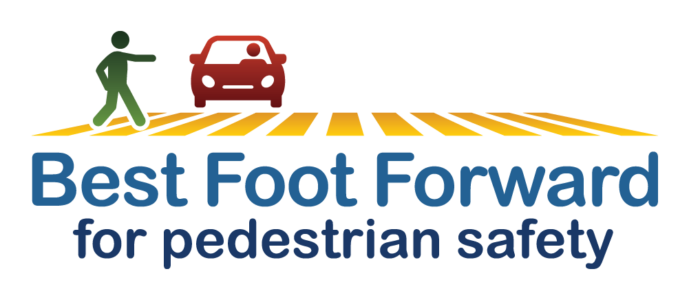Hosted by Bike/Walk Central Florida, the Best Foot Forward (BFF) Summit of 2024 continued its…

What does it take to get a crosswalk, traffic signal or midblock crossing installed?
There’s a famous quote by Ghandhi: “If you don’t ask, you don’t get it.” This applies to many of our needs in life, from requests that seem like a longshot, to those that are simple.
Every day, there are requests by citizens. It could be for a crosswalk near a school, or for a signal at an intersection where traffic is growing by the day. It seems so simple, build it and everybody will be safe. But many times, what seems like a simple request, ends up taking a long time. Why is that?
Best Foot Forward wanted to know. That’s why it posed questions to traffic engineering experts at the Florida Department of Transportation (FDOT). They take care of state roads—roads whose names start with an S.R. or U.S. or are Interstates—for example. State roads are usually busy.
Local governments take care of busy highways too but are also in charge of most roads that serve neighborhoods. They follow many of the same processes as FDOT.
 FDOT: In nearly all cases, an engineering study is the first step required. The study generally includes data collection, such as vehicle and pedestrian counts. We analyze and track how many crashes have occurred in that area. We send out teams to observe the locations, to see firsthand. All of this will factor into a recommendation.
FDOT: In nearly all cases, an engineering study is the first step required. The study generally includes data collection, such as vehicle and pedestrian counts. We analyze and track how many crashes have occurred in that area. We send out teams to observe the locations, to see firsthand. All of this will factor into a recommendation.
If a countermeasure is recommended, and let’s say it’s a crosswalk, then we need to draw up a scope of work—just like you would if you were going to have work done on your house. The scope outlines the needs and tasks necessary for the project. It determines how much design we need to do, such as where do we install the lines, what kind of materials are we going to use—those sorts of things.
We also need to know if there are utilities that need to be moved or avoided, or if there are drainage impacts, or maybe there is need for additional land for the project. Any additional steps would impact our design. And, before we go to construction, almost all the design work should be completed.
FDOT: For locations with no major utility or design conflicts, the crosswalk could be installed in six to 12 months. This is assuming funding is readily available and there is an easy transition from design to construction.

FDOT: Again, if there are no major utility or design conflicts, the crosswalk could be installed relatively quickly. At FDOT, we have a mechanism called a fast response construction contract, where we can build projects, such as a crosswalk that has an RRFB, in six to 12 months. These contracts are used for projects that are less complicated and can be done for a lower cost. If there is a need for more land, or utilities are in the way, or costs are higher, the improvements would go through a different funding process and could take three years to design and construct.
As a state, we are exploring options to make this happen quicker.
(Contact your town, city, or county government to see if they have a similar program as rapid response)

FDOT: The steps for a traffic signal are similar to a mid-block crosswalk—we analyze, create a scope of work, design the project, and then construct. For traffic signals, the same design factors are at play, such as utilities, drainage and available land. All of this will affect the timeline for installation.
In addition to these factors, traffic signal installation is also affected by the type of structure we use to support the weight of the traffic signals. If the traffic signal uses concrete poles and overhead wires, then the delivery time could be completed within 12 months. If a large, metal mast arm is required, then design and installation could take more than two years. This is primarily due to the time needed for budgeting, testing to make sure the ground below the signals is stable and more time needed to design and build something that is rather complex.
FDOT: There is no one specific countermeasure that is an answer to every issue. For example, when traffic signals are installed where they are not warranted, you could actually see an increase in crashes. That shows how important it is to go through a process like this to ensure the correct countermeasure is recommended for each unique location.
As you can see, asking got us answers. Again, thanks to our sources at FDOT for answering our questions. We found these articles for further reading:
- Frequently Asked Questions – Traffic Signals (FDOT)
- Federal Highway Administration (FHWA) Pedestrian Hybrid Beacon Guide
- Traffic Control Devices: Uses and Misuses
- Guide for Improving Pedestrian Safety at Uncontrolled Crossing Locations
- Marking and Signing Crosswalks
- FDOT Design Manual: Pedestrian Facilities




This Post Has 0 Comments